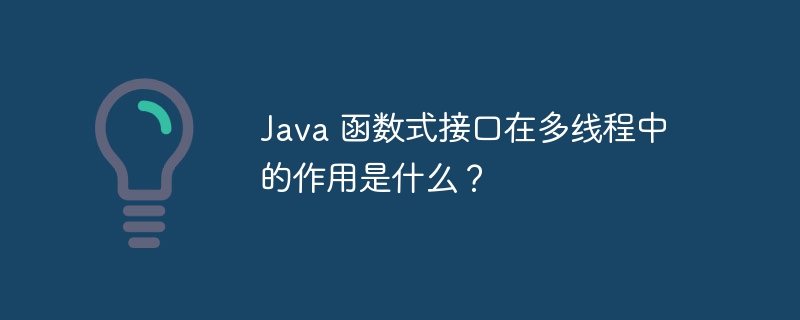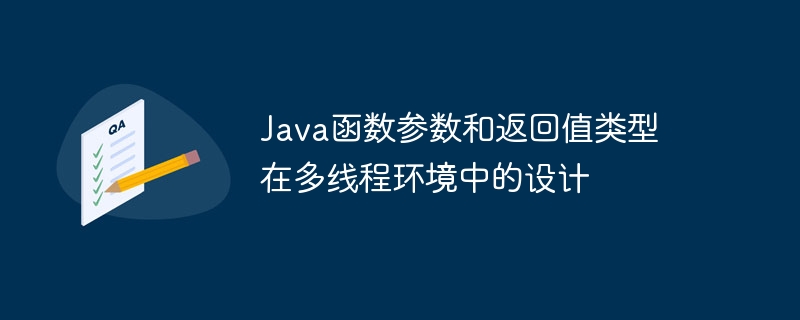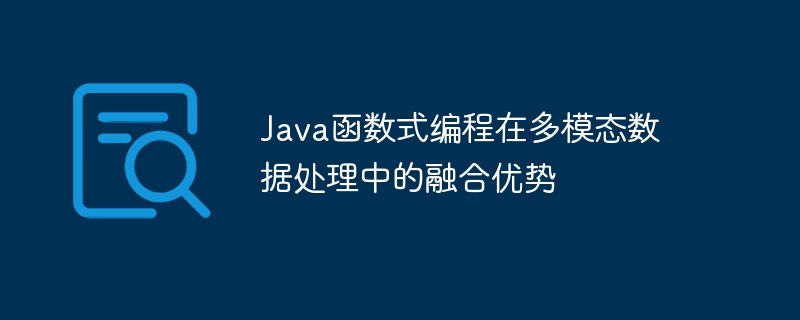提升多线程 java 函数执行效率的途径:锁定粒度优化:识别并仅锁定必要的对象部分。非阻塞数据结构:利用 concurrenthashmap 等结构避免锁争用。线程池:管理线程,节省创建和销毁开销。并发集合:使用 java 提供的线程安全集合类,实现快速迭代和修改。

提升多线程 Java 函数执行效率的途径
在构建健壮、高性能的多线程 Java 应用程序时,优化函数执行效率至关重要。本教程探讨了提升多线程 Java 函数执行效率的有效方法。
1. 锁定粒度优化
立即学习“Java免费学习笔记(深入)”;
过多的锁定会导致争用并降低性能。识别并锁定只有必要的部分,以最小化同步开销。例如,如果你只需更新对象的某些字段,请只锁定这些特定的字段,而不是整个对象。
2. 非阻塞数据结构
利用非阻塞数据结构(如 ConcurrentHashMap)来避免锁争用。这些数据结构支持并发访问,无需显式锁定。
3. 线程池
使用线程池管理你的线程,而不是为每个任务创建新线程。这可以节省创建和销毁线程的开销,并允许重用空闲线程。
4. 并发集合
Java 提供了称为并发集合的特殊集合类,专为多线程环境而设计。这些集合提供对并发访问的线程安全性,同时允许快速迭代和修改。
实战案例
考虑一个计算密集型操作的简单场景,它需要在多线程环境中执行。以下示例演示了如何利用这些技术来提高函数效率:
import java.util.concurrent.ConcurrentHashMap;
import java.util.concurrent.ExecutorService;
import java.util.concurrent.Executors;
class Task implements Runnable {
private ConcurrentHashMap<Integer, Integer> data;
private int startIndex;
private int endIndex;
public Task(ConcurrentHashMap<Integer, Integer> data, int startIndex, int endIndex) {
this.data = data;
this.startIndex = startIndex;
this.endIndex = endIndex;
}
@Override
public void run() {
for (int i = startIndex; i < endIndex; i++) {
int value = data.get(i);
value++;
data.put(i, value);
}
}
}
public class MultithreadingOptimization {
public static void main(String[] args) {
// 使用并发散列表
ConcurrentHashMap<Integer, Integer> data = new ConcurrentHashMap<>();
// 初始化数据
for (int i = 0; i < 1000000; i++) {
data.put(i, 0);
}
// 使用线程池
ExecutorService executor = Executors.newFixedThreadPool(Runtime.getRuntime().availableProcessors());
// 分配任务
int tasks = Runtime.getRuntime().availableProcessors();
int chunkSize = data.size() / tasks;
for (int i = 0; i < tasks; i++) {
executor.submit(new Task(data, i * chunkSize, (i + 1) * chunkSize));
}
// 等待任务完成
executor.shutdown();
while (!executor.isTerminated()) {
try {
Thread.sleep(100);
} catch (InterruptedException e) {
e.printStackTrace();
}
}
}
}通过采用这些技术,我们可以有效地提高多线程 Java 函数的执行效率,从而构建响应迅速的应用程序。
以上就是在多线程环境中提高 Java 函数执行效率的方法有哪些?的详细内容,更多请关注php中文网其它相关文章!






